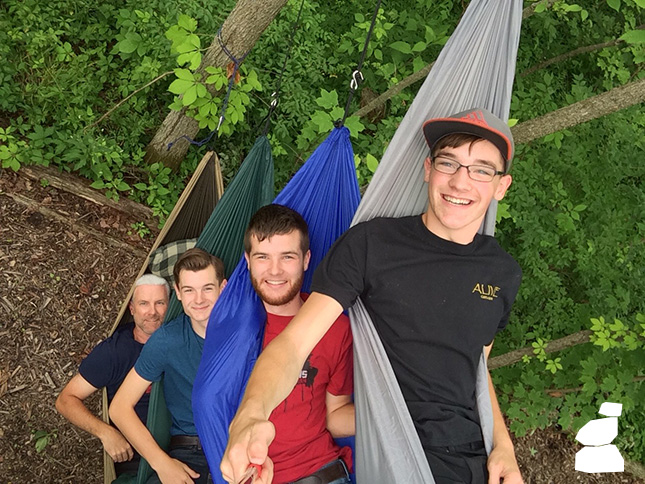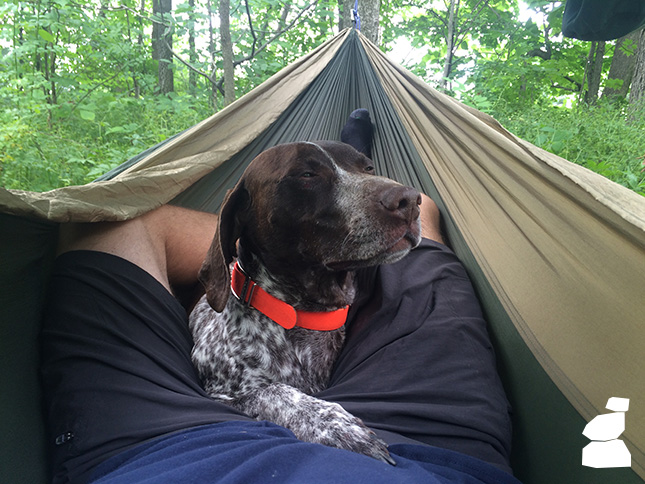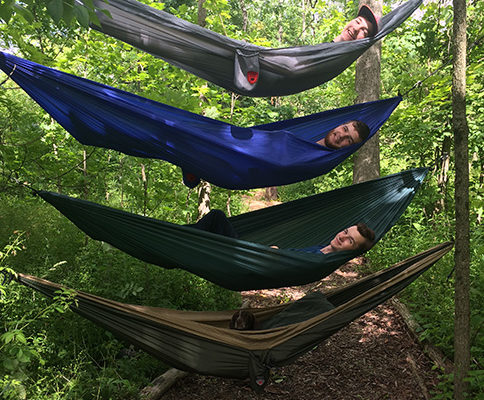When Your Mattress Won’t Fit In The Backpack
Gear: Trials and Errors
This post contains affiliate links. Please see our Disclosure Statement for additional information.
We’ve always enjoyed hiking and camping. But, I must confess ours has been of the more modern sort. We would camp, but we did it out of a 30’ RV. We would hike, but we always did it in such a way that we could be back to our starting point by day’s end. That’s pretty much it. Day hikes from our fifth wheel. We love it. We’ve seen some beautiful places. But we’ve been wanting to try something new. See some places that you can’t get there and back in the same day. This presents the need for a new skill set and some new equipment. So we thought periodically we could share with you some of the things we have learned along the way.
I’m 43 years old and I like my queen size mattress. I sleep great. I like it that way. But my queen size Tuft and Needle mattress won’t fit in my backpack. Even if it did, there’s a weight issue that makes it impractical. Yeah, that’s what we’ll call it—impractical. This has been the main thing that held me back from overnight trips—I don’t want to sleep on the ground. Call me old. Call me a wimp. Whatever! I like to wake up rested without nursing a sore neck, hip, or back.
The desire to see and do things in the backcountry that require two to three days minimum travel have encouraged me to seek a solution to this conundrum. As I have researched and talked with other hikers, an overwhelming number have recommended hammocks. Okay, we have a hammock in the yard and it won’t pack any better than my mattress and it weighs more. Needless to say, they were referring to a much different version of hammock designed with weight and portability in mind. Made from materials ranging from nylon to parachute material, they are lightweight yet durable enough to support up to 400 pounds. Also, they provide incredible comfort for an afternoon nap or a full night’s rest without the aches and pains associated with sleeping on the ground.
As I mentioned, overnight backpacking requires a new set of skills to go along with the new equipment. I didn’t want to just buy a hammock, throw it in my pack, and head off into the great beyond only to find out it was less than tolerable. This is a family project, so, in an effort to acclimate ourselves to sleeping in hammocks, we decided to spend our first nights close to home… real close. In fact, it was the woods right beside the house. Hey, if it doesn’t work out, I’m 25 yards from my bed. Well, it has worked out well, but not without a couple short, restless nights. I wanted to share with you a few of the things we’ve learned and hopefully make some other’s adjustment to sleeping in a hammock go as smoothly as possible.

TEMPERATURE
If you live in a climate that has a virtually steady climate that averages right around that 75 degree mark, there will be no cause for concern. For the rest of us who deal with slightly more varied temperatures, there could be need for some added preparations. We have settled on the single and double parachute hammocks by Grand Trunk. They breath nicely in warmer temperatures and keep cool with even a slight breeze. This however, acts to make you cold when the temperature begins to drop below that 70 degree mark.
SLEEPING BAG
Sleeping in a bag, inside the hammock adds another 20-30 degrees of comfort to the lower end of the temperature scale. We also have found a TETON Sports Camp Pillow to raise the comfort level without adding too much bulk inside the hammock. Something else to keep in mind, whatever the rating on the sleeping bag, add 20-30 degrees to it when using it in a hammock. We are using the TETON Sports TrailHead 20F Ultralight Sleeping Bag
. These bags used in conjunction with a hammock, begin to feel cold at around 50 degrees. This is due to the compression of the insulating material against the sides and bottom of the hammock. Insulating value is dependent on the loft of the insulating material. When it is compressed it does not protect against the cold nearly as efficiently. Layering clothes can help if you are needing to sleep at colder temperatures than the bag alone will protect against.
CARE
These hammocks are durable but not indestructible. I’ll tell you how stupid I am. My wife and I decided to try out a double hammock. Upon receiving it, I set it up for a trial run between two trees just out from the porch. I cleared enough of the firewood from under the hammock so it would have clearance, or so I thought. Everything was fine when I got in, but when my wife got in with me, it dropped just low enough that a splinter off a piece of firewood punctured the hammock. Now I have a brand new hammock with a 2” tear in it. I’m brilliant. What can I say?
So on the off-chance I could repair it, I sent this tweet to Grand Trunk.
@GrandTrunkGoods I've got a double parachute hammock with a 2" tear in it. How do I repair?
— ThatCoolHikingBlog (@coolhikingblog) June 28, 2016
They responded a few hours later.
@coolhikingblog Unlike other brands, we don't send repair kits, we send you a new hammock. Click on "returns" on the bottom of our homepage.
— GRAND TRUNK (@GrandTrunkGoods) June 29, 2016
Good to their word, they sent me a brand new hammock. I have to admire a company that warranties their product against my stupidity. That’s customer service!
SIZING
My sons tried the ultralight and found them too small to be comfortable for their full-size frames for overnight sleeping. They would have been perfect for an afternoon nap in the park or a break along the trail. But overnight comfort, with the addition of sleeping bag and camp pillow, required they move up to the Grand Trunk Single Parachute Nylon Hammock. My wife and I found the double to be nice for an afternoon siesta, but again impractical for two people for an extended period of time. We do, however, individually love the added room of the Grand Trunk Double Parachute Nylon Hammock
for sleeping on your side and still having enough fabric to cover you and keep the bugs out. While not enough to keep out weather, the fabric on either side can be lapped over one another to keep the bugs out. The storage pocket attached to the middle of one edge can be weighted by placing something in it. (Phone, rock, or–my favorite–a Springfield XDS) That pocket is then tossed over the other side to keep the fabric in place and keep the bugs out.
Needless to say, there has been a learning curve. But it has been fun, and we’ve found a comfortable way to sleep. Plus, they’re great for a Sunday afternoon nap. Two trees, two minutes and you’re ready for your nap or a full night’s rest.
PS Dogs love hammocks, too!

Have a great adventure,
Mike



